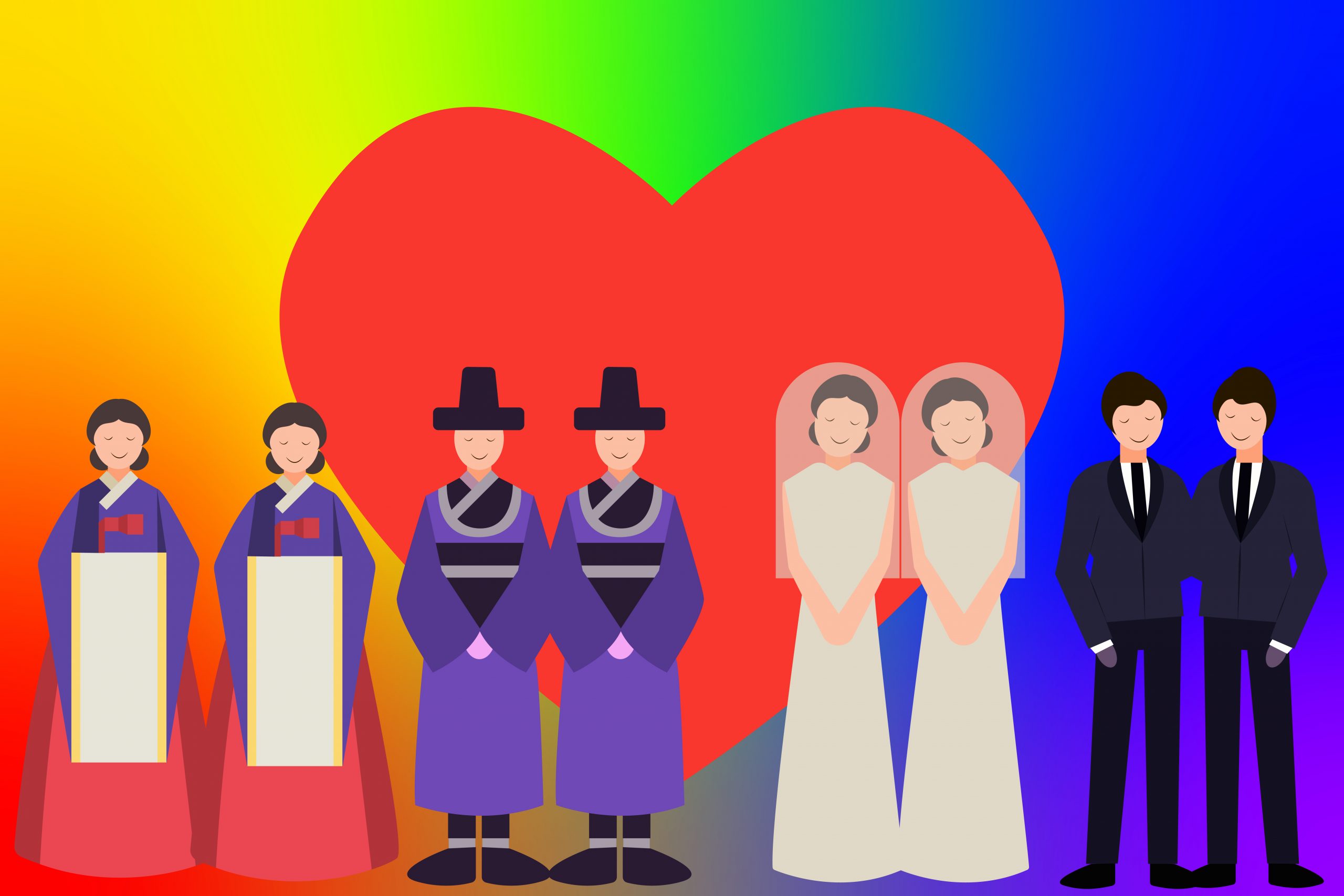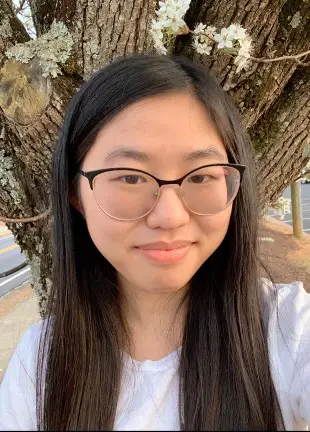Pride Month commemorates the first Stonewall riot on June 28, 1969, a historic event that kickstarted the modern queer rights movement on a much more public scale. As significant as this month is for the awareness and inclusion of queer people in the United States, however, the movement that it celebrates has not been equally successful across the globe.
The misconception that LGBTQ+ identities are a “purely modern phenomenon” continues to persist, especially across Asian countries. In South Korea, it’s not uncommon for people to paint queerness as a purely Western invention, inherently at odds with Korean traditions and values. The resulting homophobia and transphobia have created a rampantly hostile environment for the LGBTQ+ community — when their very existence isn’t being denied at every turn, people are sometimes turned into social pariahs just for coming out.
Rhetoric denying the existence of queer people in Korea has been regularly echoed by South Korean religious figures and politicians. Even in my own life, as a queer woman, I’ve had friends and family react to my identity with confusion and disbelief. One person even joked that I only identified the way I do because I was just “that American.”
However, any amount of digging proves that this attitude is ahistorical.
Queering Ancient Korea
Korean shamanism goes back thousands of years, predating all other major religions in the peninsula. Its most important practitioners, the shamans (or mudang), were predominantly female according to most accounts, and exclusively female according to others.
However, a male shaman (the baksu mudang) could take part in the traditionally female role. In these old spiritual practices, the mudang “was always a woman, but not necessarily female.” While sufficient data does not exist to prove exactly whether or not these people’s identities can be directly compared to that of transgender individuals, this practice exists parallel to the fluid gender expression of religious figures throughout Asia.
Later on, other social classes opened for queer expressions of gender and relationships. For example, the Samguk Yusa, which details the three kingdoms of Korea and is Korea’s oldest historical document, makes note of a group in the Silla dynasty (57 BCE – 935 CE) known as the hwarang. This term, which translates to “flower boys”, refers to a military group made up of young men. Beyond their purely military capacity, the hwarang are known for their eroticism, with Silla poetry depicting same-gender sex and romance among these elite warriors.
Furthermore, traveling troupes of male singers, dancers and other performers called namsadang likely appeared in the early Silla kingdom and lasted well into the Joseon dynasty (1392-1910). Namsadang performances were a popular form of satirical entertainment for the lower classes, highlighting the social inequalities of the time and espousing “ideals of equality” (which was also likely why the noble class treated them with little respect).
Nowadays, the namsadang performances are seen as an integral part of Korea’s cultural heritage, but while there is some debate as to whether or not the namsadang were exclusively queer, they offer up plenty of examples of gay relationships in premodern Korea. Both the performances and performers are proof of queer expression — for example, during the Joseon dynasty, a popular skit depicts a nobleman spending exorbitant amounts of money on an attractive man. Additionally, younger men would often play women’s roles in theatrical performances and some performers would sleep with other men.
Although these examples largely come from lower socioeconomic classes, there were queer members of the aristocracy, rulers included. King Hyegong of Silla is one of the earliest known examples, though his identity is a difficult account to figure out. Though unmistakably queer, historians disagree as to whether they are a transgender woman or an effeminate gay/bisexual man, as they had at least one male partner and were sometimes described as a “man by appearance but a woman by nature.”
Additionally, the later kings of Goryeo (918-1392), the kingdom that succeeded Silla, also had same-gender relationships. At least two separate Goryeo kings, Mokjong and Gongmin, had male partners during their respective reigns. Additionally, the fact that court officials recorded and preserved the names of Gongmin’s partners suggests that they were not only his romantic partners, but members of Gongmin’s court. Though these kings still existed in a heteronormative society, their openness with their partners suggests relationships between men were somewhat acknowledged during this time.
Of course, due to the patriarchal lens through which people recorded history, far less is known about same-gender relationships between women. Still, at least one prominent example is present. Crown Princess Sunbin, the daughter-in-law of King Sejong (Korea’s most famous king and the inventor of its written language), had a life filled with controversy. Chief among these was the fact that she “loved her female servant,” Sossang, and would sleep with her, a fact that led to the dissolution of Sunbin’s marriage to Crown Prince Munjong and her banishment.
Confucianism, Community, and the Closet
As illustrated by many of the above examples, queer communities and people were met with heavy criticism and the legitimacy of their relationships was marred by an extremely heteronormative and patriarchal society. It is therefore difficult to determine how consensual and how sincere some of these relationships were, as historical documents were rarely sympathetic to queer people. This particular brand of homophobia and transphobia existed due to multiple factors, many of which influence sentiments toward queer people in the modern-day.
To begin, Korean culture is deeply rooted in filial piety and continuing the family line, which reinforces the attitude that marriage is a heterosexual union designed to bear children. And so the existence of queer people has always been looked down upon in some respects throughout Korean history. That being said, the adoption of Confucianism as the state philosophy during the Joseon dynasty (1392-1910) further codified certain relationships as both normal and desirable.
East Asian civilizations were already marked by communalism, and Neo-Confucianism only heightened this value to new extents, particularly when it came to gender roles and the family. It emphasized certain hierarchical dynamics between a man and his wife and underlined the family as the primary unit that makes up society. As such, it spread highly gendered norms across the country and discouraged anything deviating from the patriarchal and heteronormative worldview.
Although this did not mean that queer people magically stopped existing (namsadang performances, for instance, continued until the Japanese occupation in 1910), it certainly clamped down on queer people’s self-expression. And frankly, it shouldn’t come as a surprise that the most obvious examples of LGBTQ+ individuals predate the Joseon dynasty.
So, while queer people certainly existed, and the government never criminalized being a member of the LGBTQ+ community, staying in the closet was very much the norm, as was marrying someone of the opposite gender. Among the noble classes, same-gender relationships were much more harshly frowned upon, as there were greater pressures to have an heir.
South Korea in the Here and Now
As the most recent dynasty that persisted the longest in Korean history, the Joseon dynasty and its attitudes on relationships and gender continue to influence modern attitudes.
Furthermore, when Confucianism fell out of public favor, it was replaced by Protestant Christianity, a lingering legacy of the United States’ deep involvement with the creation of the modern South Korean state. And as you can imagine, Korean Evangelical Protestants proved to be no more sympathetic to the LGBTQ+ community than their Confucian predecessors and were often less tolerant.
To this day, Korean society largely excludes queer people. On top of the aforementioned denial of the very existence of non-heterosexual and non-cisgender identities, the national government has failed to pass nondiscrimination laws to protect queer people multiple times. On top of that, only 44% of South Koreans were accepting of gay people in a 2020 poll and only around 5% of respondents in a 2018 poll were comfortable with gay people as close friends. These polls, while dismaying at first glance, do admit that public perception has warmed up considerably to the community in recent years, however.
The struggle for queer rights marches on in South Korea, as it does everywhere else in the world. We have always been here, in one way or another, and understanding this is a key step in fighting for the inclusion of queer identities not as something opposed to some vaguely defined “traditional value,” but rather an integral part of Korean history and culture.

















